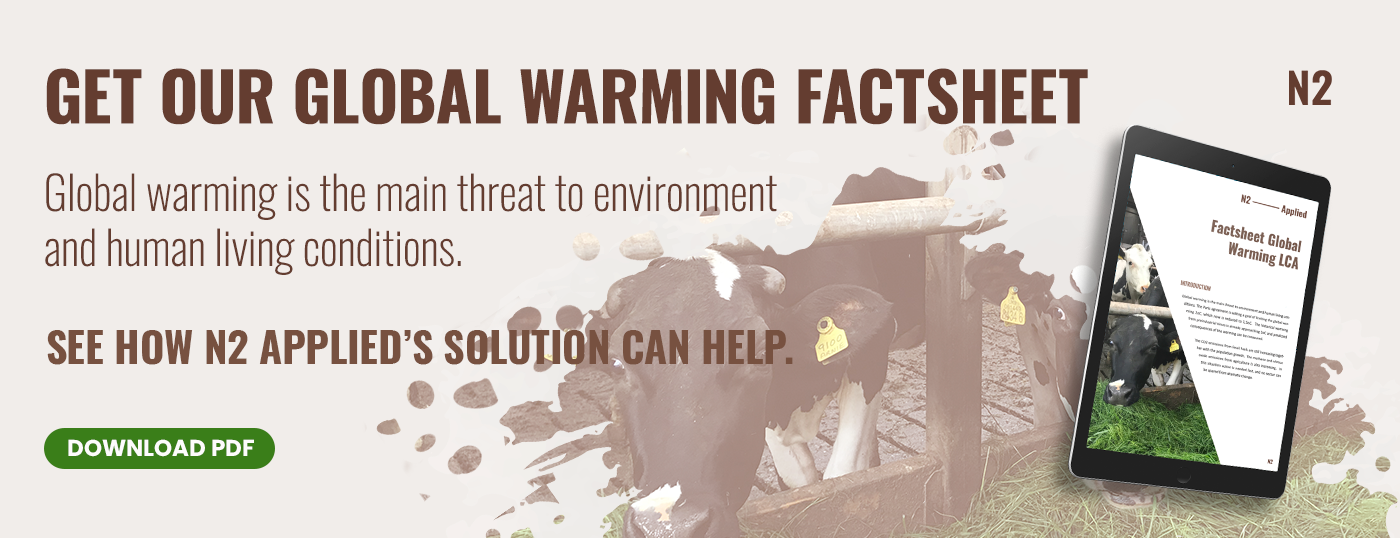Though often focused on for its environmental benefits, reducing greenhouse gas emissions on-farm is an enormous opportunity for improved production.
As well as benefiting the environment, pursuing a reduction of greenhouse gas (GHG) can have positive knock-on effects for increasing your crop yields, reducing costs and improving the long-term productivity of soils. This article will explore seven ways in which you can reduce GHG emissions on your farm and reap the rewards of doing so.
1. Reduce chemical fertiliser input
Mineral N fertilisers have high carbon costs associated with their production, meaning there is a GHG cost before they even hit the farm gate. Optimising production systems to reduce the GHG emissions and financial cost of chemical fertilisers should therefore be a first port of call. Accurate nutrient planning, precise application, use of organic fertilisers and utilising nitrogen fixing crops in rotations can all contribute to lowering your mineral N input and costs.

88% of all UK ammonia emissions are from agriculture
2. Improve slurry handling
88% of all UK ammonia emissions are from agriculture according to the UK Clean Air Strategy, 2019, and 50% of all methane emissions, based on DEFRA statistics in 2019. This is a considerable GHG contribution, but also a loss of ammonia N, which could be better utilised for your crop nutrition, and methane which is useful as biogas. A variety of on-farm handling solutions exist to reduce these losses. Slurry lagoon covers, storage tanks and acidification can prevent ammonia formation and loss in storage, and biogas digesters can offer a useful output for methane. Band spreaders, injection and acidification can all also help prevent ammonia volatilisation loss on field application. This means lower emissions and more ammonia available to your crops.
3. Proper application timing
As discussed above, ammonia volatilisation from soils is a big GHG contributor and a big loss of N. Urea fertilisers and slurries are two of the biggest culprits if applied incorrectly and at the wrong time. Making these applications when soil and air temperatures are cool can minimise volatilisation loss. Applying any urea-based fertilisers before rainfall can also help it diffuse into soil. With slurry, the solutions mentioned above can not only reduce ammonia loss but can open your application window and increase the number of spreading days. Applying N at the correct time when crops can utilise it best also improves uptake, preventing excess N accumulation in the soil and reducing the risk of formation of other GHGs such as N2O. Timing application for when ground conditions are travelable can also save diesel costs and help to maintain soil structure.
4. Improve soil structure
Improved soil structure can be a great way of reducing your GHG emissions as well as improving crop yields. Building soil organic matter can improve soil structure and there are several ways to achieve this, such as using organic inputs, reducing tillage and using cover crops or grass leys in rotation. Increased SOM can mean soils act as a carbon sink to mitigate some GHG emissions. Better soil structure can also prevent waterlogging and compaction, which could lead to anaerobic soil conditions that can release carbon dioxide, methane and N2O if left unchecked.
5. Reduced tillage
As discussed above, improved SOM and soil structure can act as a carbon sink and prevent GHG emission, but it is easy to undo this hard work with poor cultivations. Timing of cultivation and using less intrusive tillage methods can prevent SOM breakdown and the release of its trapped carbon. Reduced tillage methods can also save on horsepower and diesel, saving both emissions and money.
6. Use renewable energy
When possible, renewable energy is a great way to reduce climate emissions. Farms are in an advantageous position to capitalise on this and add even more value to generated energy due to the many direct uses available for it. Solar panels or wind turbines can provide electrical power, but other solutions such as anaerobic digestion plants can really close the production chain and offer a great return on what could otherwise be waste products. Recycling organic waste to generate biogas, heat and electricity which can be reused on the farm, whilst also providing a fertiliser source in the form of digestate, is a great utilisation of resources to add value into your production chain and reduce emissions.
7. Improve efficiency of livestock systems
Livestock production sometimes gets a bad rap when it comes to GHG emissions, but many new technological innovations are seeing previous problems turned into solutions. Optimising feedstocks, closely monitoring animal health, recycling animal waste to soil, capturing methane and carbon dioxide for reuse as biogas, and handling slurries properly to prevent ammonia loss are just a few suggestions, and a range of solutions exist to aid you in achieving them all.





